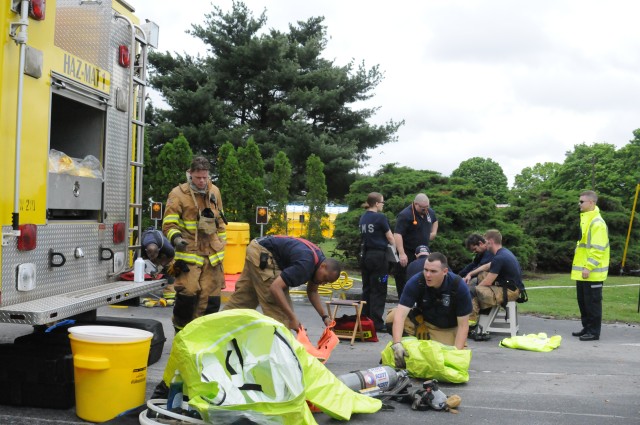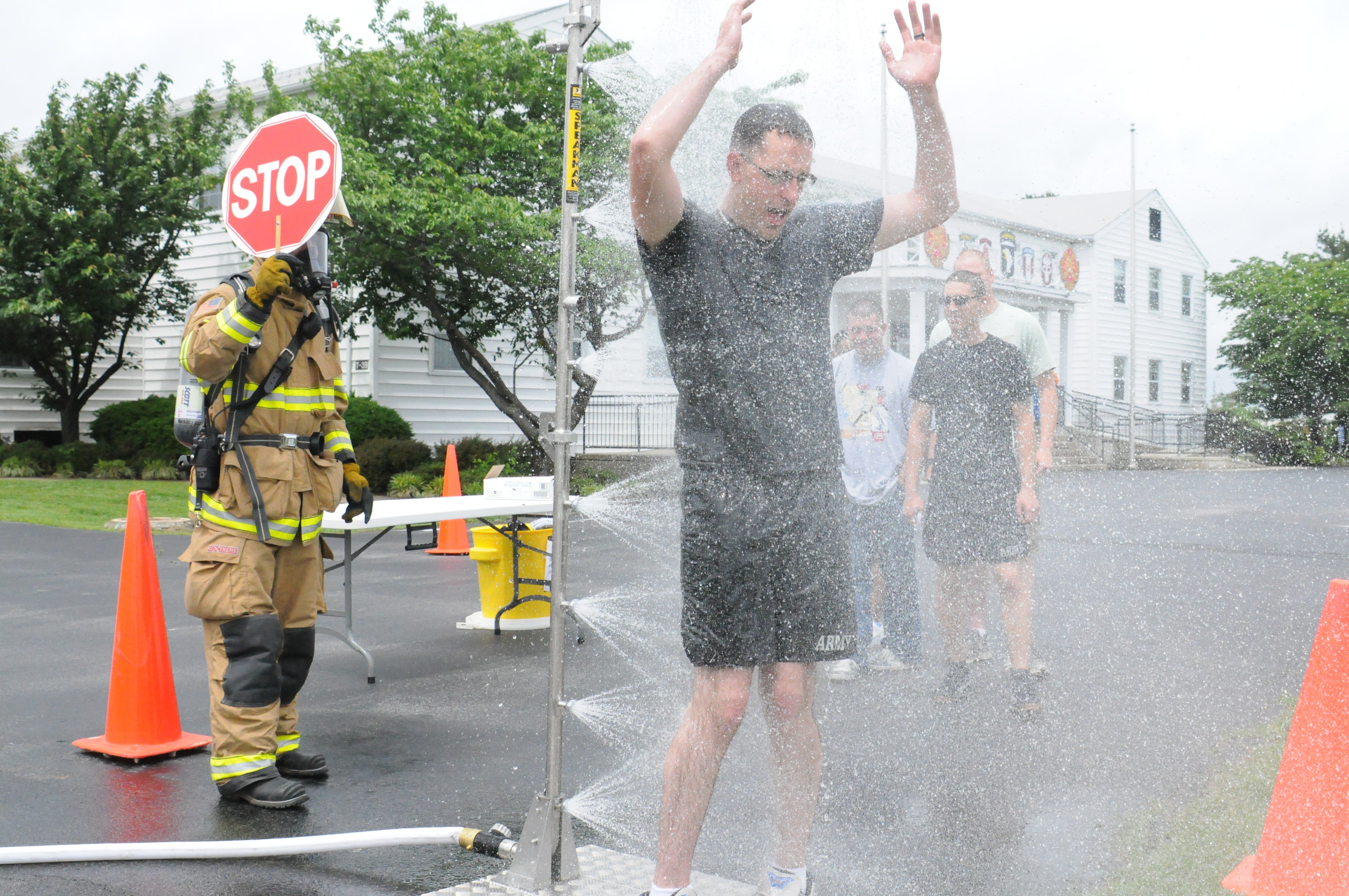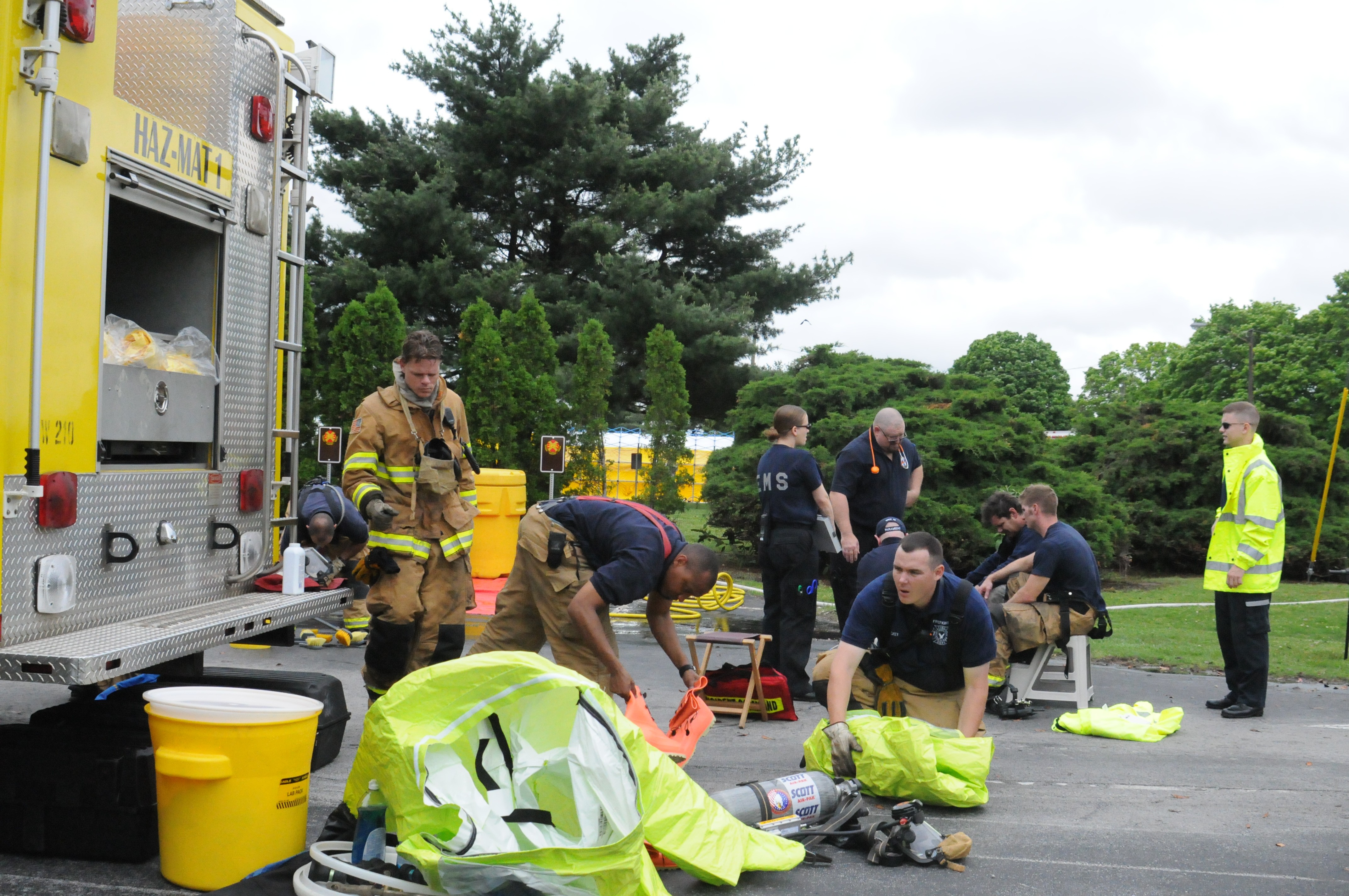FORT CAMPBELL, Ky. (May 7, 2009) - Sometime Wednesday morning a suspicious package addressed to Col. Fred Swope, Fort Campbell garrison commander, was delivered to the Garrison Headquarters building. Calls were made to emergency personnel after white powder was noticed coming from the package. Everyone was forced to evacuate the building and threat levels across the installation were increased.
While it is possible such an event could happen, it was all part of a training mission to test Fort Campbell's abilities to respond to a possible attack. Numerous agencies across the installation came together to take part in the exercise.
"It gives us an excellent opportunity to test our skills and our ability to do things if it were a true case," said Maj. Pete Reyman, director of Emergency Services. "It allows us to prepare in a controlled environment for the things we would have to do at full speed."
The phone call alone, about the suspicious package and the white powder, did not create the response to treat the scene as emergency responders did.
"Essentially what is done is a scenario buildup," said Reyman. "It's not something that we just decided 'hey we're going to sit around and then we're going to execute.' There's been intelligence information that led us to the point where when someone from inside the building called us and said 'hey, we've got a package that's suspicious and there's white powder leaking out of it' we had reason to believe it was a contaminant of some type."
Creating the scenario and coordinating to make sure all the necessary organizations would be involved took a great deal of behind the scenes work over a period of months. Members of the Directorate of Plans, Training, Mobilization and Security were among some of the key players.
"Jay Fangman deserves a lot of the credit," said Danny Greene, Installation Emergency
Management planner. Fangman is the Installation Chemical, Biological, Radiological, Nuclear, high-yield Explosives specialist. He would be the lead individual to help make sure the installation is prepared for an incident when something like anthrax, what the white powder possibly was, is found on post.
Reyman and Patrick Crane, incident commander, were pleased with the response they saw.
"From a life, health and safety perspective, I was pleased with the initial response, with the time it took for us to get here and the amount of time it took to get setup," said Reyman. "By the time I arrived at the incident command post, they were already established and had the out cordon set."
"I just think that everything worked out well with working with the different agencies," said Crane. "Whatever we needed, we got."
It did not take long for emergency personnel to determine they would need to evacuate the building and that anyone inside would need to go through the decontamination process. Victims started the process by walking through the shower. Personnel asked them if they were experiencing any medical problems. Then everyone was taken to Blanchfield Army Community Hospital for further evaluation.
While the victims were treated, personnel in hazardous materials suits walked through the building to do further tests on the package. Once the package was properly contained and removed from the building, crews who went inside also had to go through a decontamination process and have a medical evaluation.
Everything happened within a short time frame. Crane explained that if it were real-world instead of a scenario, it would actually have taken much longer.
"The things which happened in minutes, probably would have taken hours," said Crane. "You wouldn't just rush in there and the people wouldn't be as cooperative. You can't control people and people would be going nuts. It's kind of crazy. Things would have taken a lot longer."
Reyman and Crane were impressed with the response, but feel there is always room for improvement.
"We'll do an after action review," said Reyman. "We'll sit in the conference room and identify what the mission was, what the strengths were, what the weaknesses were, what the lessons learned were and what we can do better next time."
"The thing about drills is there's always something you found you forgot or something you overlooked," said Crane. "There's always opportunity for improvement. I'm sure there's something we could have done better."
During the exercise, there were measures in place to make sure responses to real-world emergencies across post were not affected.
It didn't take long until the scene was cleared and it was back to business as usual across the installation.






Social Sharing